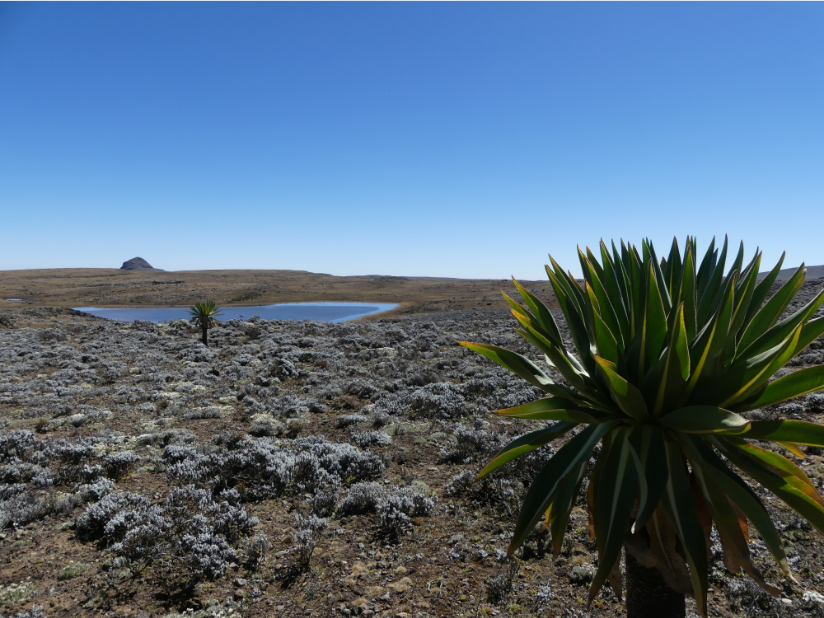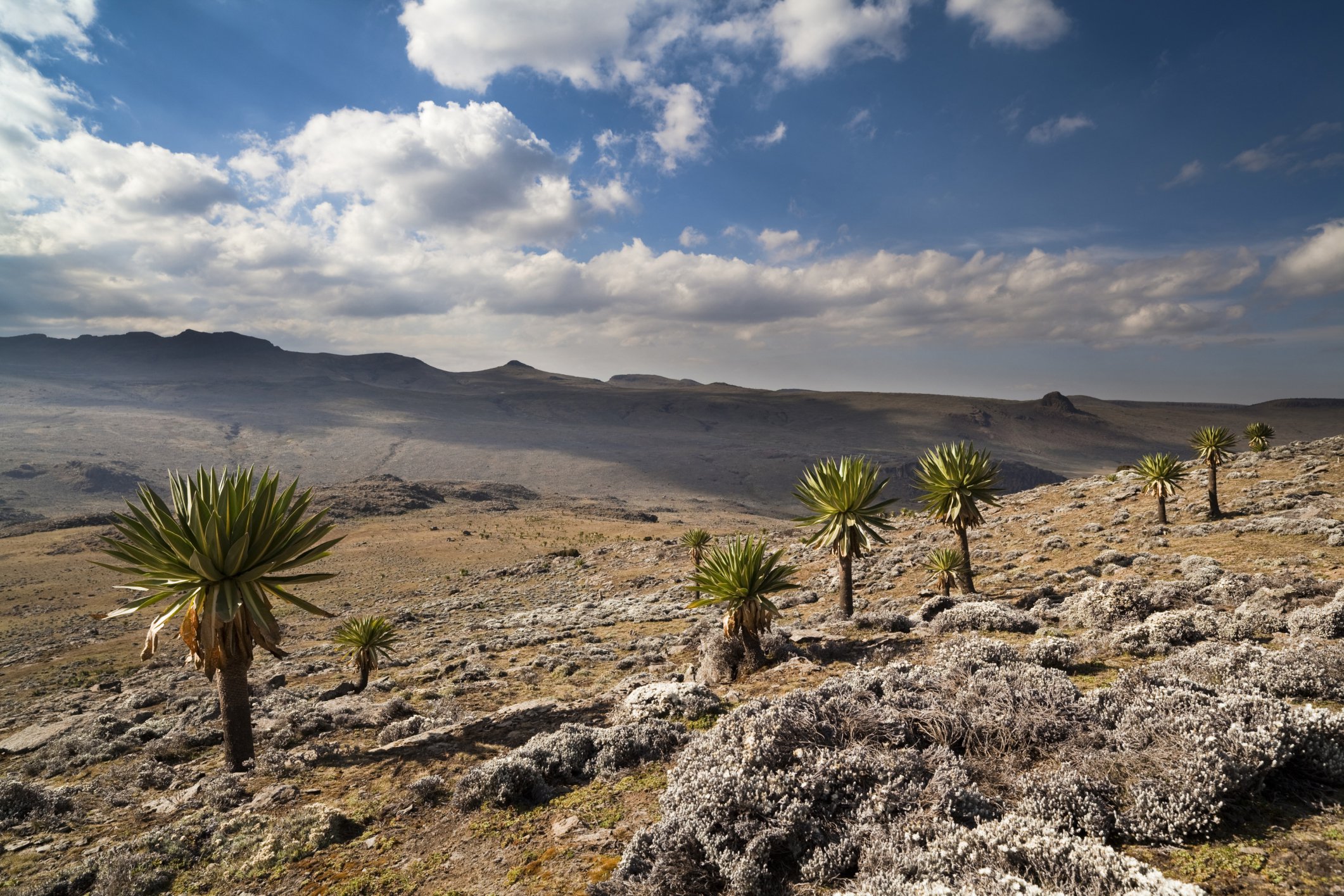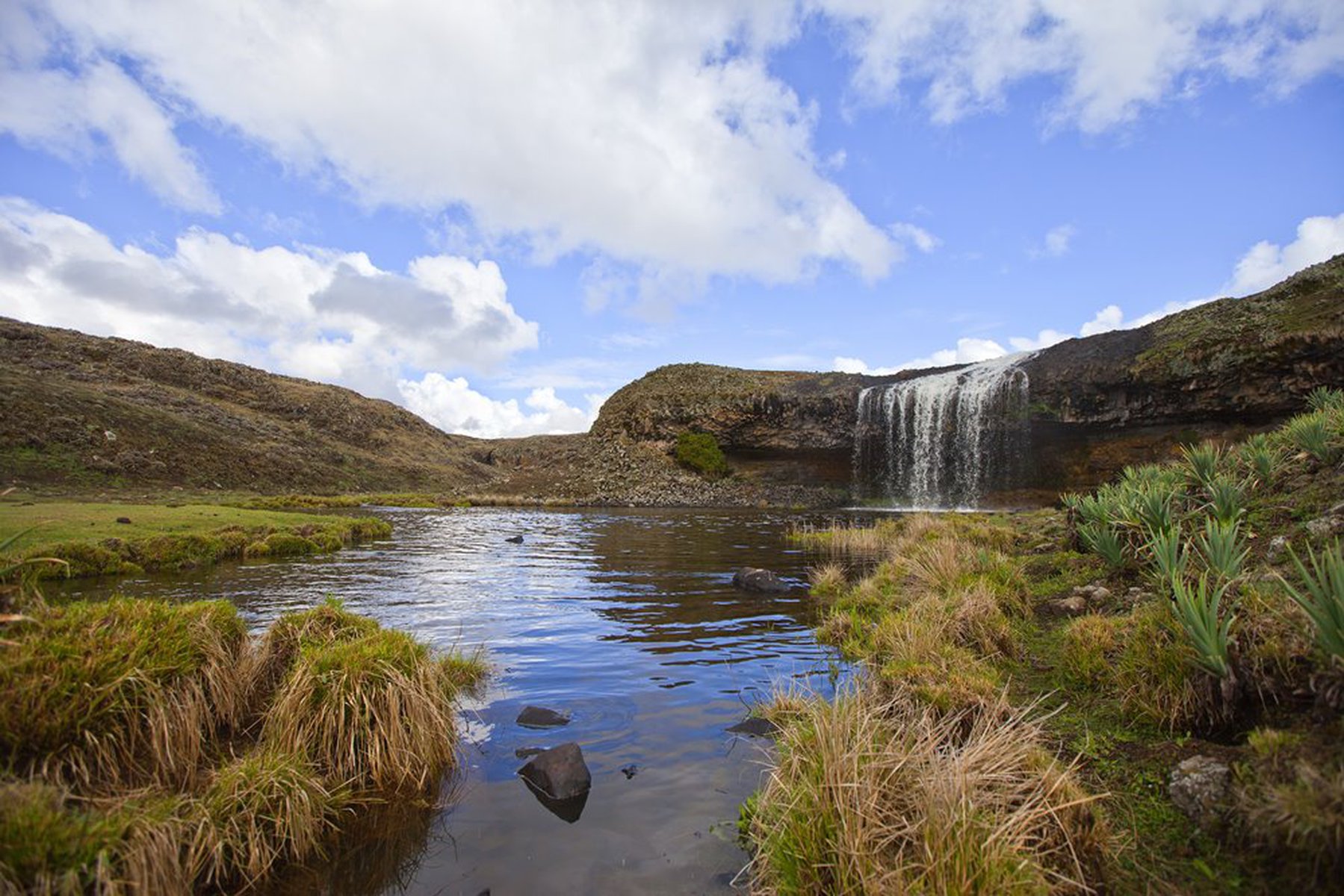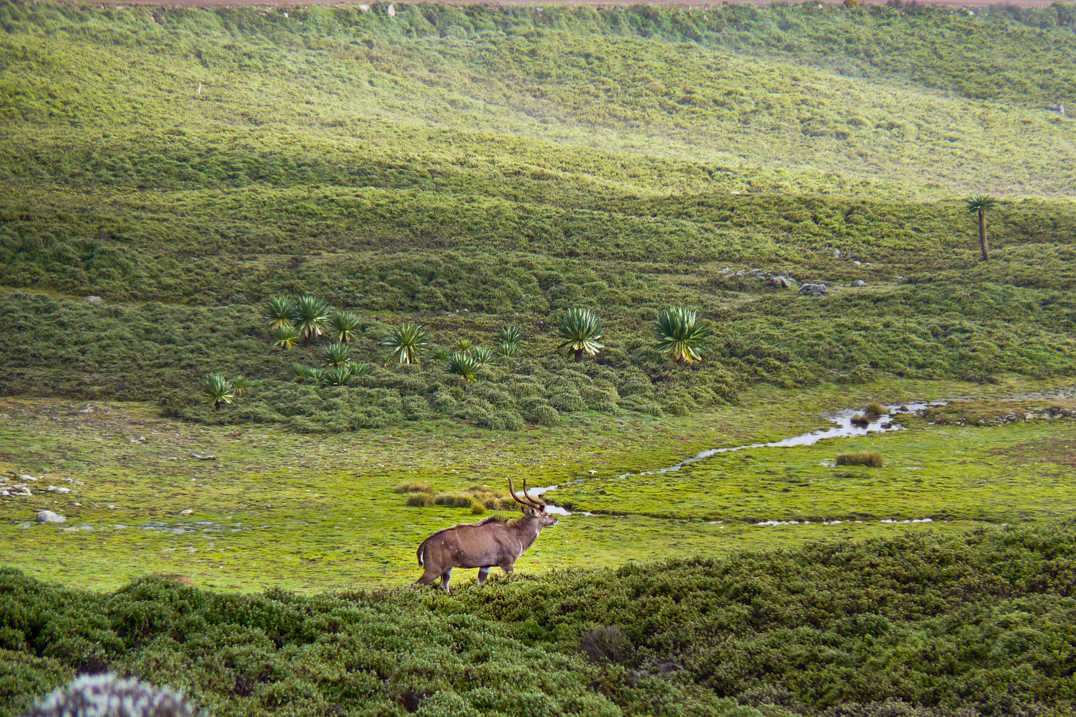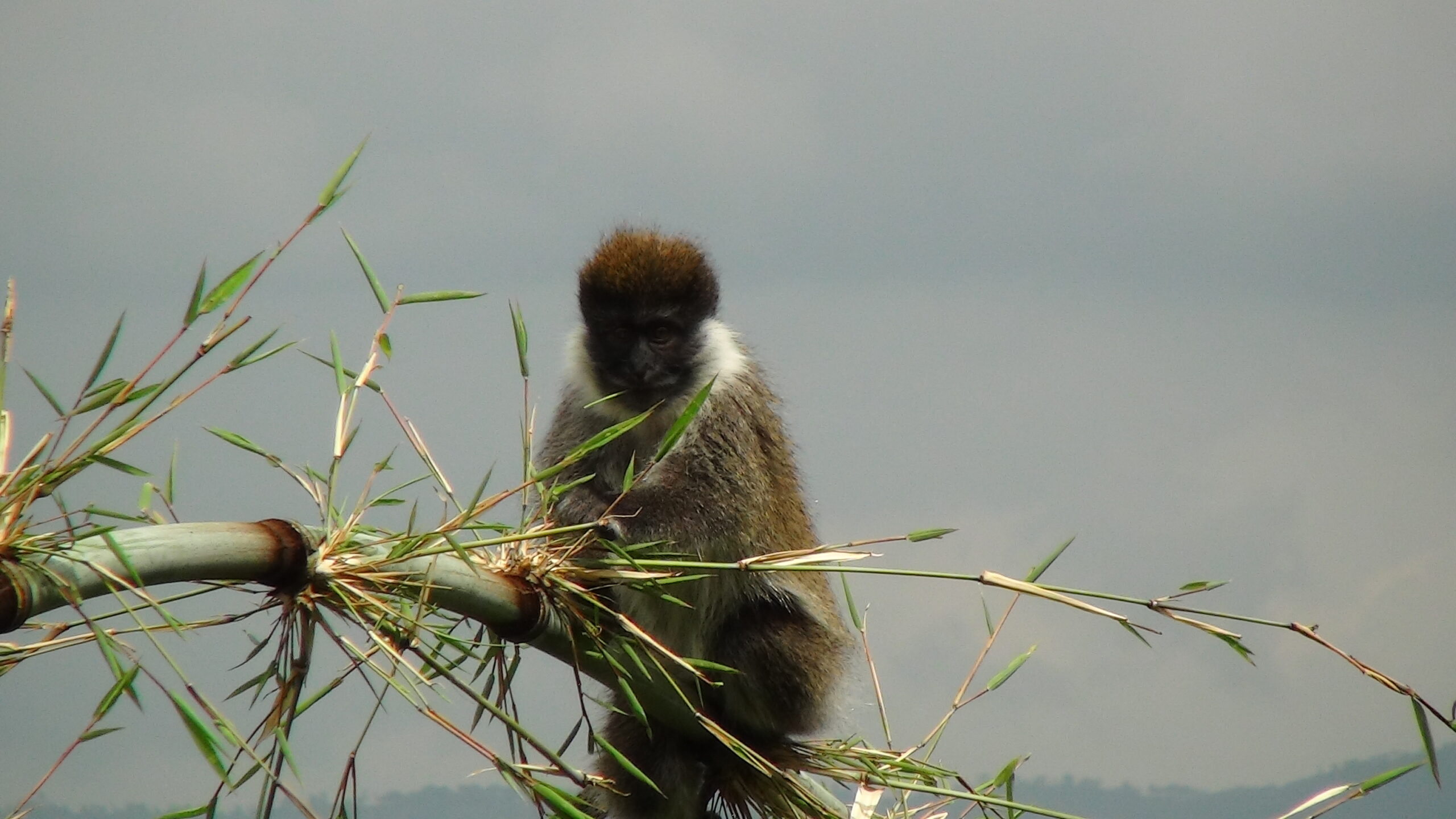7 DAYS TREKKING ON BALE MOUNTAINS NATIONAL PARK
The Bale Mountains are extraordinarily interesting, and extraordinarily varied. Spectacular volcanic towers, babbling mountain brooks and serene alpine lakes; the mountains (actually escarpment) looming majestically high above, the famous high Sanetti Plateau edged by the vast cliffs of the Harenna Escarpment and fascinating vegetation and rich animal life, the Bale Mountains offer unbelievable diversity in what is really quite a small area.
The Bale Mountains are vulcanism galore, with a huge variety of formations – consisting of ancient trachytes, basalts, agglomerates and tuffs, for the geologists amongst us. The central peaks, covered by a capping of more recent magma flows, form spectacular rock ripples and pillars, and provide a constant and dramatic backdrop to any plateau trek.
One of the area’s fascinations is its very distinct eco-regions.
Below the mountains to the north, but still within the National Park, are the Gaysay Grasslands and Park HQ “reserve”. The Grasslands are a wide area of low shrub and grass, with rivers and pools of varying seasonal sizes and bush and woodlands on the hillsides above. Much of the year, they are verdant and full of animal and bird life, and a wander through them is a delight; but, in dry season, it is grey and empty. The enclosure (actually a small reserve) by the Park HQ is a delight at any time of year, with beautiful open woodland and a wealth of sightings of its un-shy wildlife.
Most people approach the mountains from the north, climbing through its different vegetation zones: forest (some of it state planted), then a band of lovely vivid green heather, before tipping over the lip of the central Sanetti Plateau into a new world of wide plains and gentle slopes punctuated by rocky bands and outcrops and some peculiar cliffs and towers, dominated by the mass of Tullu Deemtu (4,377m). This is a grey world dominated by low low silvery helichrysum shrubs dotted with heather of different sizes and some fine giant lobelias. If the cloud is down, it is inexpressibly lonely.
The plateau’s south is cut off by the vast cliffs of the Harenna Escarpment; below it you drop through heather, then mossy giant heather, then farmland and villages before getting to the southern Harenna Forest, Ethiopia’s second-largest tract of surviving forest, a rich, damp cloud forest, its trees dripping moss and ferns at higher levels. Further in it is so remote that new species still get discovered. Even in the accessible areas the jungle is lovely and fascinating, and you have a good chance of seeing colobus and Bale monkeys, giant forest hogs and a vast selection of birds both beautiful and rare.
The mountains, and the National Park in particular, are famous for their thrilling diversity of wildlife, with around 60 species of mammal, and over 260 varieties of bird. Mammals include the majority of the remaining Ethiopian wolves, and other Ethiopian endemic mammals, the Mountain Nyala and Semien Fox. The chances of a wolf sighting on the high plateau are high, despite their being highly endangered. They are spectacular and gorgeous, and seeing one will be a highlight of any time in Ethiopia. You will see raptors including augur buzzards and, not unconnected, lots of mice and mole rats. Endless other birds and different animals – colobus and Bale monkeys in the Herenna Forest. Likewise lovely vegetation and birds, Nyala and buck in the Gaysay Grasslands and Park HQ reserve.
While this is sensational landscape, it is not pristine, grazed for chunks of the year when lower reaches are droughted-out. Even much the Harenna Forest is carpeted with cropped grass below the shrubs, with the effect that you can see some way at ground level but perhaps a few metres at head height.
The main base villages (all in the north) are Dinsho, near the National Park HQ, and Dodola and Adaba on the main road in from the west. They all have accommodation of varying qualities and supplies, and are good bases for day walks or for starting a trek onto the plateau. In addition, community-led organizations provide local guides with real insight; recommended (indeed required) for most (if not all) walks. Up inside the range (mainly above Dodola) are some lodges and tented camps: you must forge through dense forest and past beautiful waterfalls, plus not a little wildlife, to reach them. Otherwise, it is camping once up in the mountains.
